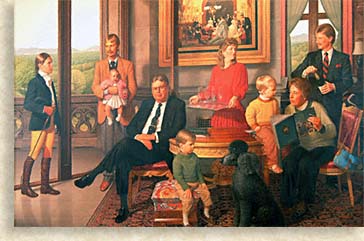Foucault uses illustrations of purification strategies, architectural significance, and institutional constructions to reveal the importance of the power of surveillance in society. For example, he introduces the piece with the strategic way a plague is contained through quarantine. This process of purification and fear of disease depicts the power of discipline from society. Also, this aspect of power highlights the fact that everyone is subject to observation and analysis. The architectural significance is the panopticon building. The panopticon allows for constant surveillance from a central tower, which observes the cells within the structure containing prisoners of visibility. The illustration of architecture shows the efficient operation of power. Lastly, societal institutions depict the process of disciplinary concepts in society through schools, factories and hospitals. Students, workers, and patients are conforming to acceptable roles in these institutions, rather than expressing independent liberties and rights because roles of citizens are influenced by an “omniscient eye” present in society.
Bordo presents body image as a result of constructed conventions being challenged, proving the power of perspective in society. Her example of Michael Jordan’s success as an athlete and his embrace of male decorativeness, supports her idea of the conditional acceptance of conventions. Foucault focuses on the power of institutions to bestow a conviction on individuals in certain circumstances. The institutional “eyes” involved allowed the ability for a man to be athletic and fashionable. Michael Jordan knows he is being watched and feels confident he isn’t conflicting with his acceptable role as a celebrity by liking nice clothing. Once again the omniscient eye reigns regarding the shifts in conventional views.
Lastly, Nochlin’s historical approach when evaluating body image parallels Foucault’s historical respect for the “technical program” of surveillance. They each try to target a constant factor that influences perspective. Their historical awareness is important to understanding the formation of the disciplinary society.
One is always influenced by the perspectives of other’s when trying to understand the world. Human nature programs an awareness of institutions affecting our decisions. When considering the mystification, conditional conventions, and historical progression of acceptable behaviors in society, the omniscient eye trumps all these influential factors. Foucault reveals that convictions are the result of feared judgment from universal surveillance.



